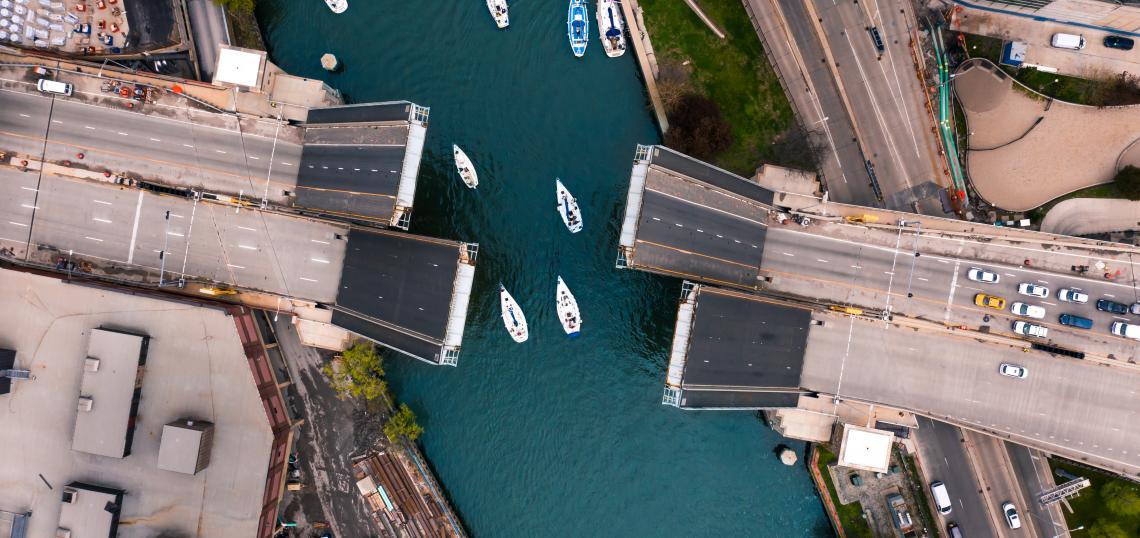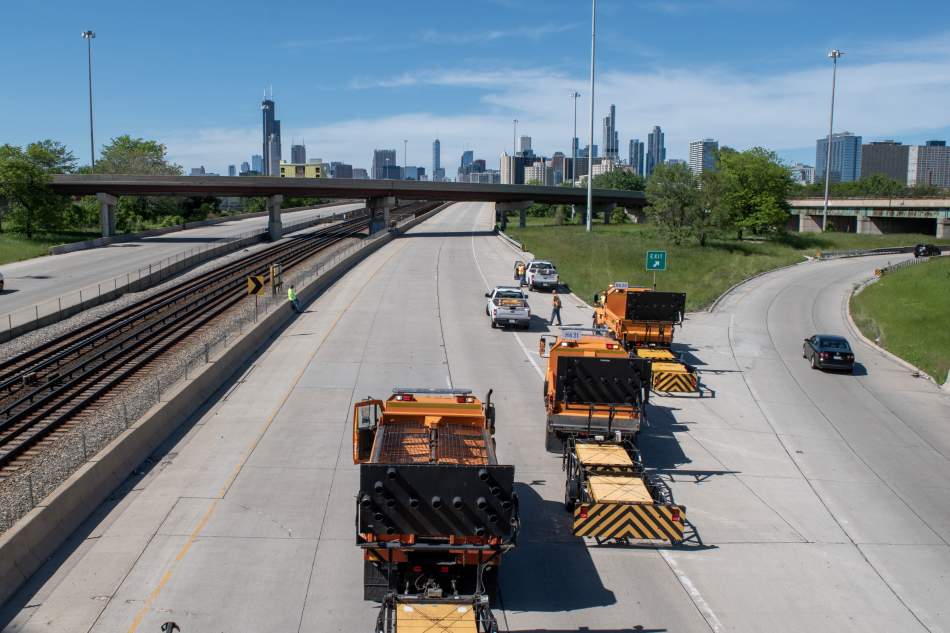This week, the City of Chicago marked the start of street paving season by announcing the launch of the first phase of Mayor Lori Lightfoot's five-year infrastructure plan called Chicago Works.
The $3.7 billion program will repair and replace many of the city's crumbling roadways, bridges, sidewalks, streetlights, traffic signals, and shoreline revetments. It includes deferred maintenance and updates on public buildings, improvements to the city's fleet of police cars, fire trucks, and snowplows. There is also funding for neighborhood investments like the INVEST South/West that prioritize walking, biking, and public transportation.
"With paving season underway across our City, we are thrilled to be able to create and offer jobs to our residents that will allow us to make critical infrastructure repairs in all 77 of our neighborhoods," said Mayor Lightfoot in a statement on Monday.
"This effort will allow us to unlock our city's full potential, give our residents the resources they need to succeed right in their own neighborhoods, and ensure that our City retains its reputation as a world-class destination filled with state-of-the-art infrastructure," Lightfoot said.
The city hopes the plan will put thousands of residents back to work and help make Chicago more environmentally sustainable. Projects were selected by using a "data-driven" process and "needs-based" assessment, according to the city, and will place a high priority on contracting with local minority- and women-owned businesses.
Highlights of the first two years of Chicago Works fall into the following 10 categories:
- Aldermanic Menu Program: $216 million over two years that includes increasing the yearly menu budget, per ward, from $1.32 million to $1.5 million.
- Bridges and Viaducts: $164.3 million to complete the funding for 23 bridge replacement projects, $66.2 million for 37 bridge repair projects, $16.9 million to rehabilitate 13 underpasses; and $7.5 million to begin the process of improving vertical clearance at 5 viaducts.
- Streets and Alleys: $250.4 million for residential and arterial street resurfacing based on the Pavement Condition Index and ADA Ramp needs. Also funds the reconstruction of WPA streets along with 100 new Green Alleys to improve drainage and sustainability; one green alley in each ward every year.
- Street Lighting: $112.3 million for the complete replacement of 300 blocks of lighting infrastructure, along with strategic targeted light pole replacements and wiring stabilization repairs.
- Traffic Signals: $28.4 million to modernize the City’s historically underfunded traffic signal system.
- Sidewalks and Pedestrian Right-of-Way: $112.2 million for sidewalk repair (hazardous, vaulted, shared sidewalk programs, ADA ramps, curb and gutter, and alley aprons) to increase accessibility and public safety.
- Complete Streets: $49.0 million for improvements to bike lanes, priority bus routes, pavement markings, and Vision Zero pedestrian safety projects. $104.2 million towards the funding of 24 streetscape projects including those in Invest South/West Corridors. $6 million for planting 12,000 trees.
- Waterways: $12.3 million for the reconstruction of 1 mile of lakeshore encompassing Morgan Shoal and the expansion of the Calumet River Dredging Facility to ensure clean waterways for commerce on the Calumet River.
- Facilities: $132.5 million for renovations and system upgrades to public facilities such as Department of Family and Supportive Service centers, Chicago Department of Public Health locations, Chicago Public libraries, and dozens of non-public facing facilities. This budget also includes environmental remediation of city-owned land and demolition of hazardous buildings.
- Equipment: $162.1 million for the City’s fleet, equipment, and IT systems.
City Hall is funding the 2021 and 2022 work with $1.4 billion in General Obligation bond proceeds introduced as part of the city’s budget process, which was approved by the City Council last year.
Although Chicago is currently on its own when it comes to borrowing the money to pay for the multi-billion-dollar program, officials are optimistic about leveraging additional sources of state and federal funding in the future.







